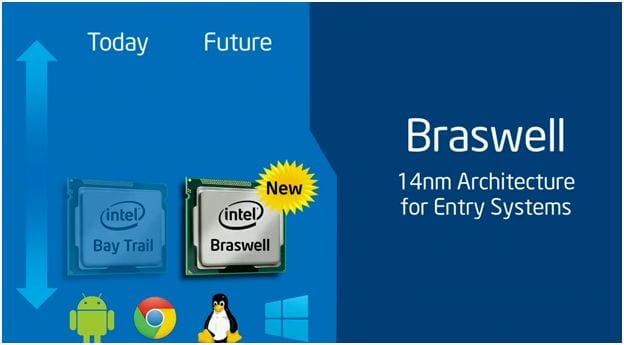Without a lot of show-up, Intel Corporation (NASDAQ:INTC) launched the first Braswell cores with 14nm measurement, in a very hush-hush manner. The Braswell is said to be Bay Trail’s successor. The new 14 nm chips succeed 22 nm Bay Trail-D or Celeron / Pentium version of the same. The new target audience of these 14 nm chips is low-end desktop computers along with the ultra mobile systems.
No dramatically new specs or features
Braswell is considered to be nothing more than the shrink version of Bay Trail. This clearly indicates that there is absolutely no need to expect some exciting or dramatic changes or new features from the 14 nm chips. All that it will refurbish is the thermals, TDPs and efficiency. Apart from this, Intel is expected to unveil another version called Cherry Trail by the end of this year, and it will offer similar kind of silicon, but in the blanket of tablet power.
The only ‘really-visible’ change would be the better graphic support. The new chips by Intel shall come packed with Generation 8.
The Graphics Nitty-Gritty
The Braswell 14 nm chips are expected to start shipping in two or four core configurations. The predecessor of the Bay Trail had GPU Technology, which was sourced from Ivy Bridge, and at that time, Haswell had already started reaching the markets. This indicates that Braswell has completely jumped off the Haswell graphics generation. Intel has now standardized the graphics capabilities in Atom as well as Core products.
The CPU Features and Specs
Braswell-enabled N3150 is just a bit slower on its CPU side. It comes with the 1.6GHz / 2.08GHz capabilities, but has the capacity to offer a quicker RAM. This in turn implies that one can have the better and improved hardware, in terms of graphics.
As of now, on papers, it seems like Braswell is an incredible follow-up of Bay Trail, with the capability of offering same kind of power consumption development.









